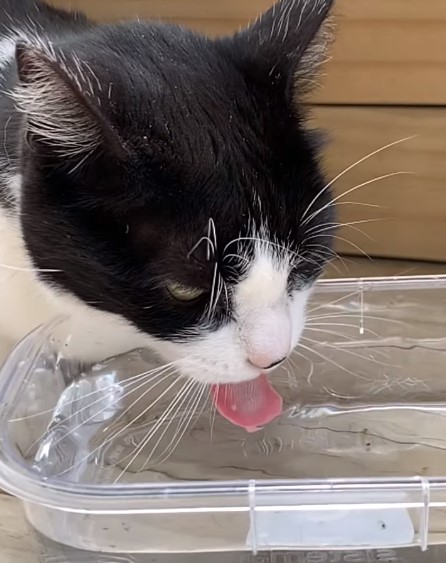Introducing a new cat to a multi-cat household can be a delicate process. Cats are territorial animals, and sudden introductions without proper preparation can lead to stress, aggression, and conflict among the feline residents.
However, with the right approach and careful management, you can create a harmonious environment for all your cats.
In this article, I will provide you with valuable tips and guidelines to help you successfully introduce a new cat to your multi-cat household.
1. Preparing for the Introduction
Before bringing a new cat home, it’s essential to make the necessary preparations to ensure a smooth introduction. Here are a few key steps to follow:
a. Create a Safe and Separate Space
Designate a separate room or area for the new cat to reside in initially. This space should be equipped with all the necessary amenities, including food, water, litter box, scratching post, and comfortable bedding.
This will give the new cat a chance to acclimate to its new surroundings without feeling overwhelmed.
b. Provide Individual Resources
Each cat should have its own set of resources, such as food bowls, water bowls, and litter boxes. Cats are territorial animals and may become aggressive if they feel their resources are being threatened. Providing individual resources helps minimize potential conflicts.
c. Use Feline Pheromone Products
Feline pheromone products, such as synthetic pheromone sprays or diffusers, can help create a calming environment for all the cats.
These products mimic the natural pheromones that cats produce, which helps reduce stress and anxiety. Consider using them in the rooms where the cats spend the most time.
2. Gradual Introduction
The key to successfully introducing a new cat to a multi-cat household is to take it slow and gradually increase the interaction between the cats. Here’s a step-by-step guide to help you with the process:
a. Scent Exchange
Start by exchanging scents between the cats. Take a soft cloth and gently rub it on one cat’s cheeks and then on the other cat. This helps transfer the scent, familiarizing each cat with the other’s smell. Repeat this process several times a day.
b. Feeding Time
Next, start feeding the cats on opposite sides of a closed door. This allows them to associate positive experiences, such as eating, with each other’s presence.
Over time, gradually move the food bowls closer to the door, so they can eat in close proximity without feeling threatened.
c. Visual Introduction
Once the cats are comfortable eating near the door, it’s time to allow visual contact. Use a baby gate or a cracked-open door to let them see each other while still maintaining a physical barrier. Observe their behavior closely during this stage. If any signs of aggression or stress occur, slow down the process and give them more time to adjust.
d. Controlled Face-to-Face Interaction
When the cats seem calm during the visual introductions, you can move on to controlled face-to-face interactions. Open the door slightly and allow the cats to approach each other while closely monitoring their behavior. If tensions arise, separate them and try again later. Repeat this step until they can be in the same space without aggression.
e. Supervised Together Time
Once the cats have shown positive interactions during controlled face-to-face encounters, it’s time for supervised together time.
Allow them to interact freely while you closely monitor their behavior. Be prepared to intervene if necessary, but also give them space to establish their own hierarchy.
3. Maintaining a Harmonious Environment
Even after the initial introduction process, it’s important to continue fostering a harmonious environment for your multi-cat household. Here are some tips to help maintain peace and minimize potential conflicts:
a. Provide Sufficient Resources
Ensure that each cat has access to an adequate number of resources. This includes food and water bowls, litter boxes, scratching posts, and resting areas. Having enough resources helps prevent competition and reduces the likelihood of conflict.
b. Play and Enrichment
Engage your cats in interactive play sessions to help release energy and reduce stress. Provide toys and environmental enrichment, such as puzzle feeders or interactive toys, to keep them mentally stimulated.
This can redirect their focus away from potential conflicts and promote bonding through positive experiences.
c. Individual Attention
Give each cat individual attention and quality time with you. This helps reinforce their bond with you and reduces any feelings of jealousy or rivalry among the cats.
Regular grooming sessions and one-on-one playtime can strengthen their relationship with you and promote a sense of security.
d. Regular Veterinary Care
Schedule regular veterinary check-ups for all your cats. This ensures their overall health and can help detect any underlying medical issues that may contribute to behavioral problems.
Keeping your cats in good health contributes to their overall well-being and can minimize stress-related conflicts.
4. Recognizing and Addressing Problems
Despite your best efforts, conflicts may still arise in a multi-cat household. It’s important to identify and address these issues promptly. Here are some common problems and strategies to manage them:
a. Aggression
If you notice aggressive behavior, such as hissing, growling, or physical fights, it’s crucial to intervene and separate the cats. Give them time to calm down before attempting to reintroduce them. Consider consulting with a feline behaviorist or veterinarian for additional guidance.
b. Litter Box Issues
Litter box problems can arise when cats feel threatened or territorial. Ensure that you have enough litter boxes available in different areas of the house. Clean the boxes regularly and address any potential stressors that may affect litter box usage.
c. Territory Disputes
Cats are territorial by nature, and disputes over territory can occur. Provide vertical spaces, such as cat trees or shelves, where cats can retreat and establish their own territories. This helps reduce the chances of confrontations over space.
5. Patience and Time
Introducing a new cat to a multi-cat household requires patience and time. Each cat has its own unique personality and may adapt to the new dynamics at their own pace.
Be prepared for setbacks and progress at a pace that suits your cats’ comfort levels. Rushing the process can lead to more significant issues and setbacks.
Remember, building a harmonious multi-cat household takes time and effort. By following these tips and guidelines, you can create a peaceful and loving environment where your cats can coexist happily.
With patience, understanding, and proper management, you’ll see your feline companions form strong bonds and enrich each other’s lives.
Additional Tips
Here are a few additional tips to further support the integration of a new cat into your multi-cat household:
a. Scent-Swapping
Continue scent-swapping even after the initial introduction phase. Exchange bedding or blankets between the cats, allowing them to familiarize themselves with each other’s scents. This ongoing process helps create a sense of familiarity and acceptance.
b. Positive Reinforcement
Reward positive behavior and interactions between your cats. Use treats, praise, and petting to reinforce calm and friendly behavior. This positive reinforcement helps establish positive associations and encourages your cats to engage in friendly interactions.
c. Separate Feeding Stations
Consider maintaining separate feeding stations for your cats, even after they have successfully integrated. Cats may have different eating habits or preferences, and providing individual feeding areas helps prevent food-related conflicts or stress.
d. Environmental Enrichment
Provide plenty of environmental enrichment options throughout your home. This includes scratching posts, interactive toys, and hiding places. Enriching their environment keeps your cats engaged and mentally stimulated, reducing the likelihood of boredom-related conflicts.
e. Gradual Alone Time
While it’s essential for your cats to spend time together, also allow them to have separate, alone time. Each cat should have access to quiet areas or designated spaces where they can retreat and have some solitude. Respect their individual needs for personal space.
f. Seek Professional Help if Needed
If you encounter persistent aggression or other significant behavioral issues during the introduction process, don’t hesitate to seek professional help.
A qualified feline behaviorist or veterinarian experienced in cat behavior can provide valuable insights and tailored guidance to address specific challenges.
g. Monitor and Adjust
Continue monitoring your cats’ behavior and interactions, even after they have integrated successfully. Cats are complex creatures, and changes in their environment or relationships can impact their dynamics.
Be attentive to any signs of stress, aggression, or tension, and make adjustments as necessary to ensure a harmonious environment.
h. Gradual Exploration
Allow the new cat to gradually explore other areas of the house while closely supervising their interactions with the resident cats. Start by opening the door to one additional room at a time, gradually expanding their access to the entire house.
This gradual approach helps prevent overwhelming the new cat and minimizes territorial disputes.
i. Play Sessions and Group Activities
Engage in interactive play sessions and group activities with all the cats together. Playtime helps release pent-up energy and redirects any potential aggression or tension into a positive outlet.
Use interactive toys, such as feather wands or puzzle toys, to encourage shared play and positive associations.
j. Provide Vertical Space
Vertical space is crucial in a multi-cat household as it allows cats to establish their territories and escape potential conflicts. Install cat trees, shelves, or wall-mounted perches to provide elevated spaces for climbing and observation. Vertical space helps create a sense of security and reduces competition for horizontal space.
k. Gradual Unsupervised Time
Once the cats have shown positive interactions and established a level of comfort, you can gradually increase their unsupervised time together. Start by leaving them alone together for short periods, gradually extending the duration as they continue to exhibit positive behavior. Always monitor their interactions initially to ensure they remain peaceful.
l. Maintain Consistency
Consistency is key when introducing a new cat to a multi-cat household. Stick to established routines for feeding, playtime, and litter box maintenance. Cats thrive in a structured environment, and a consistent routine helps reduce stress and promotes a sense of stability.
m. Time and Patience
Integrating a new cat into a multi-cat household takes time, patience, and understanding. Each cat has its own personality and may require a different pace of integration.
Be prepared for setbacks and allow for individual adjustments as needed. With time, your cats will establish their own unique dynamics and form bonds with one another.
n. Regular Observations and Check-ins
Continuously observe your cats’ behavior and interactions. Regularly assess their body language, vocalizations, and overall well-being.
Address any concerns promptly to prevent the escalation of conflicts or stress-related issues. Regular check-ins help ensure the ongoing success of your multi-cat household.
Conclusion
Introducing a new cat to a multi-cat household can be a rewarding experience for both you and your feline companions. With patience, gradual introductions, and careful management, you can create a peaceful and harmonious environment where all your cats can thrive and enjoy each other’s company.
Dr. John Morris, DVM is a Doctor of Veterinary Medicine who has seven years of experience in feline medicine, dermatology, and behavior. He also enjoys volunteering at a local NGO that supports literacy programs for children and adults. In his free time, he enjoys fostering kittens, traveling, vegan cooking, hiking, and biking. Learn more about Justin here.


